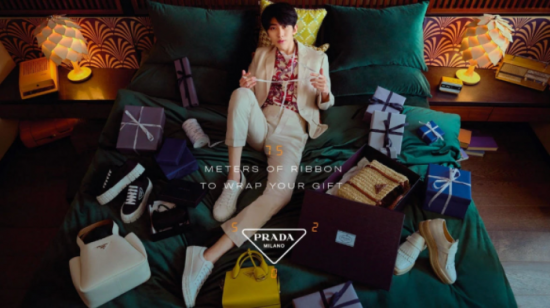The power of live streaming and short-video formats
Western luxury brands may be more comfortable with well-planned, opulent campaigns, as opposed to ‘silly’ short and snappy TikToks or live streams. However, with China’s online users spending an average of 110 minutes watching short videos every day, these platforms provide an unmissable opportunity. In fact, nearly every Chinese social media platform has integrated short video and live streaming into its services.
Notable names like Cartier have shown how this booming ‘unconventional’ industry can enable brands to appeal to China’s younger luxury consumers. Cartier ditched stuffy luxury brand conventions in their ‘Make Your Own Path’ campaign, and instead tried to resonate with potential consumers to spread brand awareness among a new audience.
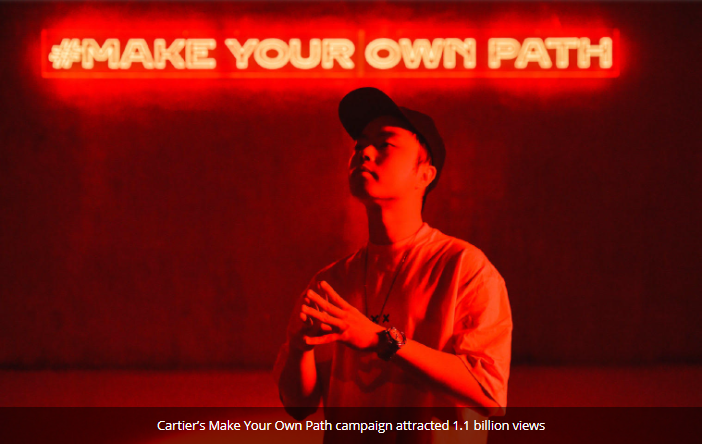
Cartier racked up 1.1 billion views by encouraging people to show off their dance moves on Douyin with a branded filter. The virtual dancing didn’t stop there; Cartier also held an online party that was live streamed on Douyin, Weibo, Xiaohongshu and WeChat. For those who wanted a real-life dance, the brand launched an event with hip-hop band X-crew-official at one of the most famous techno, house and disco clubs in Shanghai.
Cherry-picking the right shopping festivals
Singles’ Day, Double 12, Womens’ Day, 520, 618 … the list goes on. With a different shopping festival constantly around the corner, brands that are selective can often gain the most engagement.
Every company wants to resonate with its Chinese audience during Chinese New Year, but sometimes the abundance of marketing messages can get lost in the noise. YSL therefore made a bold move and decided to ditch Chinese New Year in favour of Valentine’s Day this year, as the two took place on the same weekend. The bet paid off. The luxury brand dominated the conversation during the love-themed festival by investing heavily into paid advertising and working with key opinion leaders (KOLs). The Weibo page “#YSL Valentine’s Day gift”, which hit 42.33 million views, was filled with posts linking directly to YSL’s Taobao store for a one-stop purchase.
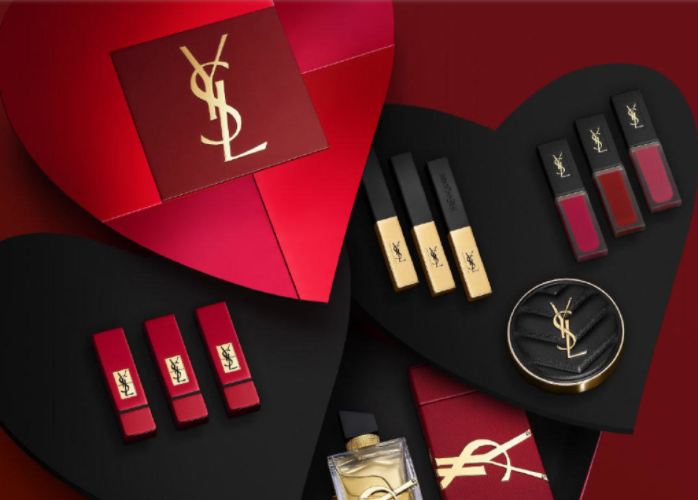
Nonetheless, YSL didn’t forget Chinese New Year completely. The campaign still contained subtle hints to the festival at the heart of the Chinese calendar. Red-themed promotions, limited-edition gift sets, and personalisation services appealed to consumers looking for the perfect Chinese New Year gift for loved ones. Through a cleverly curated campaign, YSL successfully became the talk of the town during a festival that most brands overlooked.
Understanding different target audiences and how they use social commerce platforms
In China, the decision to purchase is always only one click away. Seamless integration between social media and e-commerce is a must, begging the question: where should brands start with China’s social commerce landscape? Should they spread themselves thinly, or pick and choose? While tapping into multiple channels can expand reach, several successful brands have chosen to focus on just a couple of social platforms to best target their audience.
A luxury brand going hand-in-hand with an anime, comic and gaming (ACG) platform may seem like a recipe for disaster. But not in China. Aware of the popularity of Bilibili among Gen-Z consumers, several luxury brands have opted to work with the platform. For example, Louis Vuitton appealed to the numerous young users on Bilibili who love ACG content but don’t yet have the purchasing power to buy luxury goods. The strategy focused on building up the brand awareness and loyalty of these consumers in the long term, while simultaneously targeting the children of wealthy parents. Their AR filter allowed users to morph into a character from League of Legends and wear ‘real’ Louis Vuitton products without the heavy price tag.
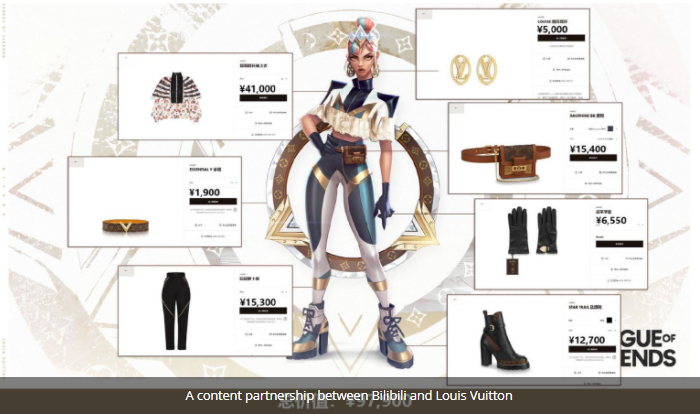
Dior, Gucci and jewellery brand Chow Tai Fook are among other luxury names to partner with Bilibili and tap into their niche ACG and e-sports-obsessed audience. Brands that are selective in their marketing strategy often excel as they can tap into subcultures and specific audiences by focusing on certain platforms.
Partnering with another big name is an easy win for luxury brands who want to appeal to a more sub-cultural audience.
Co-branded campaigns are all the rage
Chinese consumers like to get their hands on the latest limited-edition products due to their exclusive appeal. Often, the products that fly off the shelves are those that combine two well-loved brands from different industries. As a result, brands shouldn’t shy away from unexpected collaborations: Chinese consumers have been graced with ‘chicken bags’ à la KFC x Karl Lagerfeld, and an imperial meal box from Beijing’s Forbidden City and delivery platform Eleme.
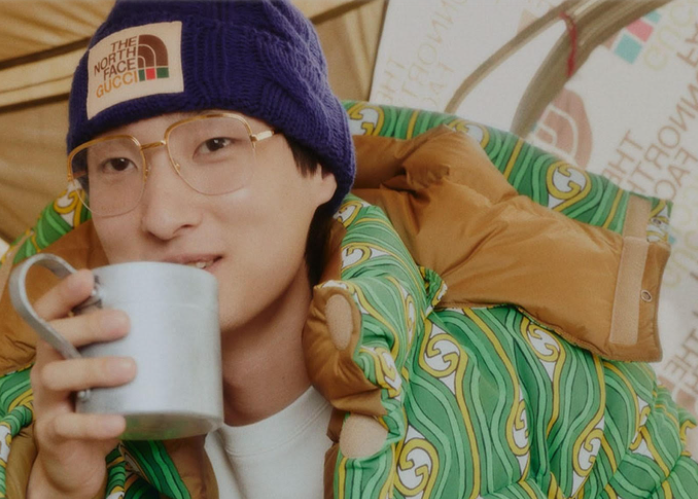
Partnerships that share a vision are the ones that enjoy the most success. Gucci and The North Face found synergy in encouraging consumers to embark on a journey of self-exploration and self-discovery through their products. Their campaign came at a time when camping and other outdoor activities has been flourishing in popularity among Chinese people. For that reason, the collection hit the spot among China’s young urbanites who want to remain fashionable with practical gear to survive the great outdoors.
By combining audiences, setting up pop-up stores in major cities, and working with 14 celebrities, Gucci and The North Face achieved extensive reach. Partnering with another big name is an easy win for luxury brands who want to appeal to a more sub-cultural audience.
Understanding China’s growing consumer nationalism
More and more international brands are slipping up and falling3qr out of favour with Chinese consumers for political reasons. Chinese companies have seen strong sales growth at the cost of foreign brands due to their in-depth understanding of local consumers and a wave of consumer nationalism, or guochao, that has swept China’s retail sphere.
Yet, this is less true of the luxury market where, as of yet, few strong domestic brands have emerged as competitors. Despite losing its partnership with Honor of Kings, Burberry has stated that the recent Xinjiang cotton boycott has had little impact on its sales.
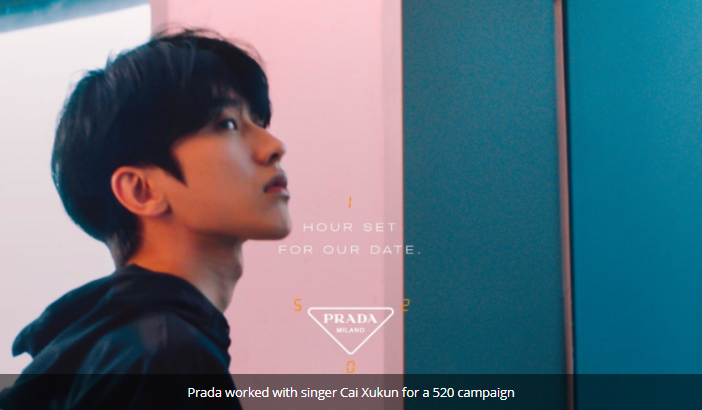
Nonetheless, Prada has shown that to maintain a strong position in the Chinese market, sensitivity and localisation are key. Heartthrob singer Cai Xukun joined Prada as a brand ambassador and played a central role in its romantic campaign for 520 (one of China’s many love-themed festivals) last year. In comparison to Western brand ambassadors, Chinese celebrities have a more personal connection with local audiences and are better versed at using the country’s social media platforms.
Chinese consumers are turning towards homegrown brands, and so, luxury retailers who want to remain relevant in China are localising and highlighting their understanding of Chinese culture.
Takeaway: Successful luxury brands are humble when going into China
With a higher proportion of young luxury consumers than the West, China’s luxury marketplace is more dynamic and there is a strong demand for innovative campaigns. China offers huge potential for international brands if they are willing to learn about its unique market, platforms and consumers. Successful luxury brands must be humble enough to set aside their centuries of Western expertise in order to localise effectively.
